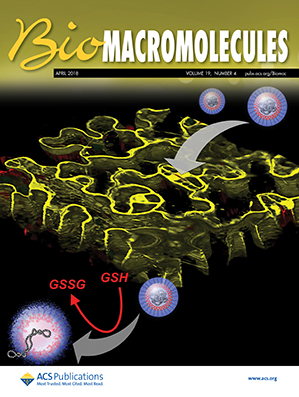二甲双胍负载单宁酸纳米颗粒通过促进基于有丝分裂的软骨细胞线粒体稳态来减轻骨关节炎。
IF 5.4
2区 化学
Q1 BIOCHEMISTRY & MOLECULAR BIOLOGY
引用次数: 0
摘要
软骨细胞氧化应激微环境和线粒体功能障碍是骨关节炎(OA)发生的关键机制。二甲双胍(Met)对线粒体有多重作用,被认为是OA的潜在治疗剂。关节腔内低血流量的特点使得二甲双胍的靶向局部给药对其临床应用至关重要。本研究以具有天然抗氧化和抗炎特性的单宁酸(TA)为原料,制备了自组装负载met的TA纳米粒子(NPs)。NPs表现出优异的活性氧清除能力,在各种介质中的稳定性和酸反应性释放Met。体外实验表明,NPs具有良好的生物相容性,可有效保护OA病理环境下软骨细胞活力,防止衰老表型。此外,NPs促进软骨细胞中抗氧化元素的表达,恢复线粒体膜电位,增强有丝分裂,改善线粒体质量。体内实验进一步证实,创伤后OA大鼠关节内注射NPs可在8周内改善软骨基质降解、骨赘形成和软骨下骨硬化。组织染色进一步证实了NPs对软骨细胞线粒体的保护作用。重要的是,体内和体外实验都表明,与单独使用TA或Met相比,NPs具有更好的细胞保护作用。综上所述,本研究表明NPs能有效对抗OA软骨退变,具有制备简单、效率高、生物安全等优点。本文章由计算机程序翻译,如有差异,请以英文原文为准。
Metformin-Loaded Tannic Acid Nanoparticles Attenuate Osteoarthritis by Promoting Chondrocyte Mitochondria Homeostasis Based on Mitocytosis
The oxidative stress microenvironment and mitochondrial dysfunction in chondrocytes are key mechanisms in the development of osteoarthritis (OA). Metformin (Met) has demonstrated multiple effects on mitochondria and is regarded as a potential therapeutic agent for OA. The low blood flow characteristics in the joint cavity make targeted local delivery of metformin crucial for its clinical application. In this study, tannic acid (TA), with its natural antioxidant and anti-inflammatory properties, was used to prepare self-assemble Met-loaded TA nanoparticles (NPs). The NPs exhibit excellent reactive oxygen scavenging capability, stability in various media, and an acid-responsive release of Met. In Vitro experiments showed that NPs possess excellent biocompatibility, effectively protecting chondrocyte viability in OA’s pathological environment and preventing the senescence phenotype. In addition, NPs promoted the expression of antioxidant elements in chondrocytes, restored mitochondrial membrane potential, and enhanced mitocytosis to improve mitochondrial quality. In vivo experiments further confirmed that intra-articular injection of NPs in rats with post-traumatic OA improves cartilage matrix degradation, osteophyte formation, and subchondral bone sclerosis over 8 weeks. Tissue staining further confirmed the protective effects of NPs on chondrocyte mitochondria. Importantly, both in vivo and in vitro experiments revealed that NPs provided superior cellular protection compared to TA or Met alone. Overall, this study demonstrates that NPs effectively against OA cartilage degeneration, with the advantages of easy preparation, high efficiency, and biosafety.
- Download: Download high-res image (132KB)
- Download: Download full-size image
求助全文
通过发布文献求助,成功后即可免费获取论文全文。
去求助
来源期刊

Biomacromolecules
化学-高分子科学
CiteScore
10.60
自引率
4.80%
发文量
417
审稿时长
1.6 months
期刊介绍:
Biomacromolecules is a leading forum for the dissemination of cutting-edge research at the interface of polymer science and biology. Submissions to Biomacromolecules should contain strong elements of innovation in terms of macromolecular design, synthesis and characterization, or in the application of polymer materials to biology and medicine.
Topics covered by Biomacromolecules include, but are not exclusively limited to: sustainable polymers, polymers based on natural and renewable resources, degradable polymers, polymer conjugates, polymeric drugs, polymers in biocatalysis, biomacromolecular assembly, biomimetic polymers, polymer-biomineral hybrids, biomimetic-polymer processing, polymer recycling, bioactive polymer surfaces, original polymer design for biomedical applications such as immunotherapy, drug delivery, gene delivery, antimicrobial applications, diagnostic imaging and biosensing, polymers in tissue engineering and regenerative medicine, polymeric scaffolds and hydrogels for cell culture and delivery.
 求助内容:
求助内容: 应助结果提醒方式:
应助结果提醒方式:


